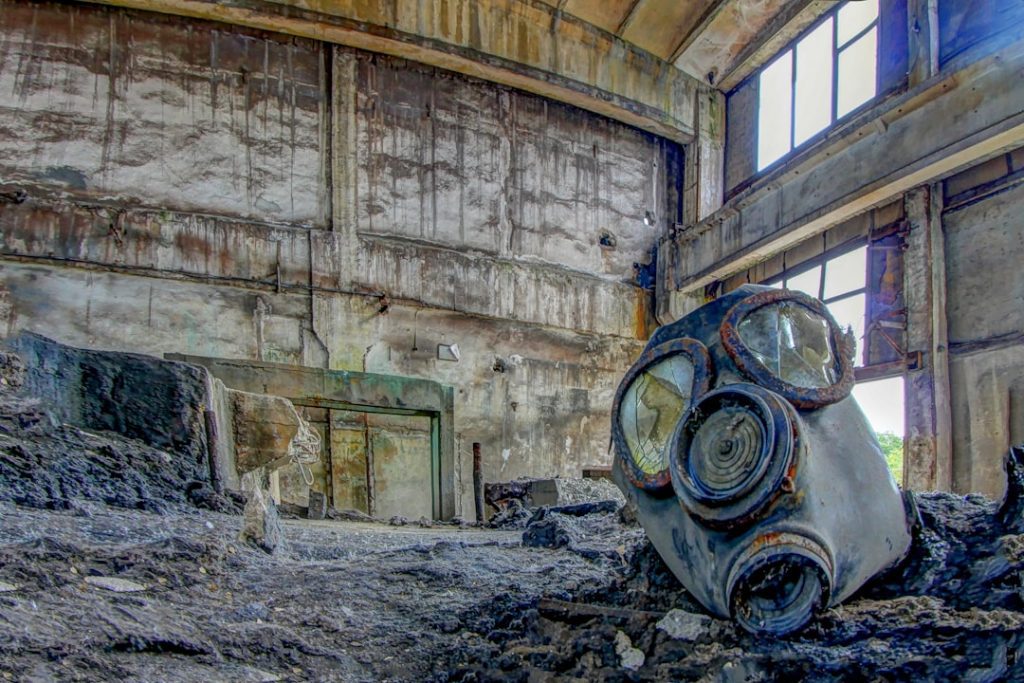Clean coal production refers to the process of using advanced technologies to reduce the environmental impact of coal-based energy production. Coal has long been a major source of energy worldwide, but its use has been associated with significant environmental concerns, particularly related to greenhouse gas emissions and air pollution. In response to these challenges, the concept of clean coal production has emerged as a way to mitigate the negative effects of coal use while still taking advantage of its abundant energy potential.
Clean coal production encompasses a range of technologies and strategies aimed at reducing the environmental impact of coal-based energy production. These include carbon capture and storage (CCS) technologies, advanced combustion techniques, integrated gasification combined cycle (IGCC) technology, emissions reduction strategies, and efficiency improvements in coal-fired power plants. By implementing these technologies and strategies, it is possible to significantly reduce the environmental impact of coal-based energy production, making it a more sustainable and environmentally friendly option for meeting global energy needs.
Clean coal production represents a critical pathway for addressing the environmental challenges associated with coal-based energy production. By investing in and implementing advanced technologies and strategies, it is possible to reduce the environmental impact of coal use while still taking advantage of its abundant energy potential. As the world continues to seek ways to transition to more sustainable energy sources, clean coal production has the potential to play a significant role in the global energy landscape.
Key Takeaways
- Clean coal production aims to reduce the environmental impact of coal-fired power plants through various technologies and strategies.
- Carbon capture and storage technologies involve capturing carbon dioxide emissions from power plants and storing them underground to prevent them from entering the atmosphere.
- Advanced combustion techniques, such as fluidized bed combustion, aim to improve the efficiency of coal combustion and reduce emissions.
- Integrated Gasification Combined Cycle (IGCC) technology converts coal into a synthetic gas, which is then used to generate electricity, resulting in lower emissions.
- Emissions reduction strategies include the use of scrubbers, selective catalytic reduction, and other technologies to remove pollutants from coal plant emissions.
- Efficiency improvements in coal-fired power plants involve upgrading equipment and processes to increase the amount of electricity generated from a given amount of coal.
- Future prospects for clean coal production include the development of even more advanced technologies and the potential for increased use of renewable energy sources in combination with coal.
Carbon Capture and Storage Technologies
Carbon capture and storage (CCS) technologies are a key component of clean coal production, aimed at reducing the amount of carbon dioxide (CO2) released into the atmosphere during coal-based energy production. CCS technologies work by capturing CO2 emissions from power plants and industrial facilities, transporting the captured CO2 to a storage site, and securely storing it underground to prevent it from entering the atmosphere. This process helps to mitigate the impact of CO2 emissions on climate change and air quality.
One type of CCS technology is post-combustion capture, which involves capturing CO2 from the flue gas produced by coal-fired power plants. This captured CO2 can then be transported via pipelines to a storage site, such as a depleted oil or gas reservoir, where it is injected underground for long-term storage. Another type of CCS technology is pre-combustion capture, which involves converting coal into a synthetic gas before combustion and then capturing the CO2 from the gas before it is burned. This captured CO2 can also be transported and stored underground.
CCS technologies have the potential to significantly reduce the environmental impact of coal-based energy production by capturing and securely storing CO2 emissions. By preventing CO2 from entering the atmosphere, CCS technologies help to mitigate climate change and improve air quality. As such, CCS technologies are a critical component of clean coal production and have the potential to play a significant role in reducing the environmental impact of coal use.
Advanced Combustion Techniques
Advanced combustion techniques are another important aspect of clean coal production, aimed at improving the efficiency of coal-based energy production and reducing emissions of pollutants such as nitrogen oxides (NOx) and sulfur dioxide (SO2). One such technique is fluidized bed combustion, which involves suspending coal particles in a bed of inert materials such as sand or limestone, allowing for more efficient combustion and reduced emissions. Another technique is integrated gasification combined cycle (IGCC) technology, which involves converting coal into a synthetic gas before combustion, allowing for more efficient energy production and reduced emissions.
In addition to improving combustion efficiency, advanced combustion techniques also help to reduce emissions of pollutants such as NOx and SO2, which can have significant impacts on air quality and public health. By implementing these techniques, it is possible to reduce the environmental impact of coal-based energy production while still taking advantage of its abundant energy potential. As such, advanced combustion techniques are an important component of clean coal production and have the potential to play a significant role in reducing the environmental impact of coal use.
Integrated Gasification Combined Cycle (IGCC) Technology
| Metrics | Data |
|---|---|
| Efficiency | 45-50% |
| CO2 Emissions | 20-30% lower than conventional coal plants |
| Electricity Generation | 600-700 MW |
| Feedstock | Coal, biomass, petroleum coke |
| Gasification Temperature | Above 700°C |
Integrated Gasification Combined Cycle (IGCC) technology is a key component of clean coal production, aimed at improving the efficiency of coal-based energy production and reducing emissions of pollutants. IGCC technology involves converting coal into a synthetic gas before combustion, allowing for more efficient energy production and reduced emissions. This process begins with the gasification of coal, which involves reacting coal with oxygen and steam at high temperatures to produce a synthetic gas consisting mainly of hydrogen and carbon monoxide. This synthetic gas can then be used as a fuel for power generation in a combined cycle power plant, where it is burned to produce electricity.
One of the key advantages of IGCC technology is its ability to produce electricity with higher efficiency compared to traditional coal-fired power plants. This increased efficiency not only reduces fuel consumption but also results in lower emissions of pollutants such as nitrogen oxides (NOx) and sulfur dioxide (SO2). Additionally, IGCC technology allows for the capture and storage of carbon dioxide (CO2) emissions, further reducing the environmental impact of coal-based energy production.
By implementing IGCC technology, it is possible to significantly reduce the environmental impact of coal-based energy production while still taking advantage of its abundant energy potential. As such, IGCC technology represents an important pathway for achieving clean coal production and has the potential to play a significant role in reducing the environmental impact of coal use.
Emissions Reduction Strategies
Emissions reduction strategies are an important aspect of clean coal production, aimed at reducing the release of pollutants such as nitrogen oxides (NOx), sulfur dioxide (SO2), and particulate matter during coal-based energy production. One such strategy is the use of flue gas desulfurization (FGD) systems, which remove sulfur dioxide from flue gas before it is released into the atmosphere. FGD systems work by spraying flue gas with a limestone slurry, causing a chemical reaction that converts sulfur dioxide into a solid byproduct that can be safely disposed of.
Another emissions reduction strategy is selective catalytic reduction (SCR), which reduces nitrogen oxide emissions by reacting flue gas with ammonia over a catalyst. This reaction converts nitrogen oxides into nitrogen and water vapor, significantly reducing their release into the atmosphere. Additionally, electrostatic precipitators can be used to remove particulate matter from flue gas before it is released into the atmosphere, further reducing air pollution.
By implementing emissions reduction strategies, it is possible to significantly reduce the environmental impact of coal-based energy production while still taking advantage of its abundant energy potential. These strategies help to improve air quality and public health by reducing the release of pollutants into the atmosphere, making coal-based energy production more sustainable and environmentally friendly.
Efficiency Improvements in Coal-Fired Power Plants

Efficiency improvements in coal-fired power plants are an important aspect of clean coal production, aimed at reducing fuel consumption and greenhouse gas emissions while still meeting energy demand. One way to improve efficiency is through the use of supercritical and ultra-supercritical steam cycles, which operate at higher temperatures and pressures compared to traditional subcritical steam cycles. This allows for more efficient conversion of heat into electricity, resulting in lower fuel consumption and reduced emissions.
Another way to improve efficiency is through combined heat and power (CHP) systems, which capture waste heat from power generation and use it for heating or other industrial processes. By utilizing waste heat in this way, CHP systems can achieve higher overall efficiency compared to traditional power generation systems. Additionally, co-firing biomass with coal in power plants can help to improve efficiency while reducing greenhouse gas emissions, as biomass is considered a renewable energy source.
By implementing efficiency improvements in coal-fired power plants, it is possible to significantly reduce fuel consumption and greenhouse gas emissions while still meeting energy demand. These improvements help to make coal-based energy production more sustainable and environmentally friendly, contributing to the overall goal of clean coal production.
Future Prospects for Clean Coal Production
The future prospects for clean coal production are promising, as ongoing research and development efforts continue to advance technologies aimed at reducing the environmental impact of coal-based energy production. Carbon capture and storage (CCS) technologies are expected to play a significant role in clean coal production, as they have the potential to capture and securely store carbon dioxide emissions from power plants and industrial facilities. Additionally, advancements in advanced combustion techniques and integrated gasification combined cycle (IGCC) technology are expected to further improve the efficiency and environmental performance of coal-based energy production.
Furthermore, ongoing efforts to develop emissions reduction strategies and improve efficiency in coal-fired power plants are expected to contribute to the overall goal of clean coal production. By implementing these technologies and strategies, it is possible to significantly reduce the environmental impact of coal use while still taking advantage of its abundant energy potential. As such, clean coal production has the potential to play a significant role in meeting global energy needs while mitigating climate change and improving air quality.
In conclusion, clean coal production represents a critical pathway for addressing the environmental challenges associated with coal-based energy production. By investing in and implementing advanced technologies and strategies such as carbon capture and storage (CCS), advanced combustion techniques, integrated gasification combined cycle (IGCC) technology, emissions reduction strategies, and efficiency improvements in coal-fired power plants, it is possible to significantly reduce the environmental impact of coal use while still taking advantage of its abundant energy potential. As ongoing research and development efforts continue to advance clean coal technologies, the future prospects for clean coal production are promising, with the potential to play a significant role in meeting global energy needs while mitigating climate change and improving air quality.
If you’re interested in learning more about the challenges facing coal and briquette markets, check out this article on Almassiyah. It discusses the various obstacles and hurdles that the coal and briquette industries are currently facing, shedding light on the complexities of clean coal production and the need for innovative solutions.
FAQs
What is clean coal production?
Clean coal production refers to the process of producing electricity from coal in a way that reduces environmental impact. This can include technologies such as carbon capture and storage, as well as advanced combustion techniques to minimize emissions of pollutants.
How does clean coal production work?
Clean coal production typically involves the use of advanced technologies to reduce the environmental impact of coal-fired power plants. This can include processes such as pre-combustion capture, post-combustion capture, and oxy-fuel combustion, which aim to capture and store carbon dioxide emissions.
What are the benefits of clean coal production?
Clean coal production can help reduce the environmental impact of coal-fired power plants by capturing and storing carbon dioxide emissions. This can help mitigate climate change and reduce air pollution. Additionally, clean coal technologies can improve the efficiency of coal-fired power plants, leading to lower fuel consumption and reduced operating costs.
What are some of the challenges of clean coal production?
One of the main challenges of clean coal production is the high cost of implementing advanced technologies such as carbon capture and storage. Additionally, there are technical challenges associated with capturing and storing carbon dioxide emissions, as well as concerns about the long-term safety and viability of carbon storage sites.
Is clean coal production a sustainable solution?
Clean coal production can be a transitional solution to reduce the environmental impact of coal-fired power plants while renewable energy sources are further developed. However, it is not considered a long-term sustainable solution, as it still relies on the use of a non-renewable resource and requires ongoing investment in advanced technologies.



